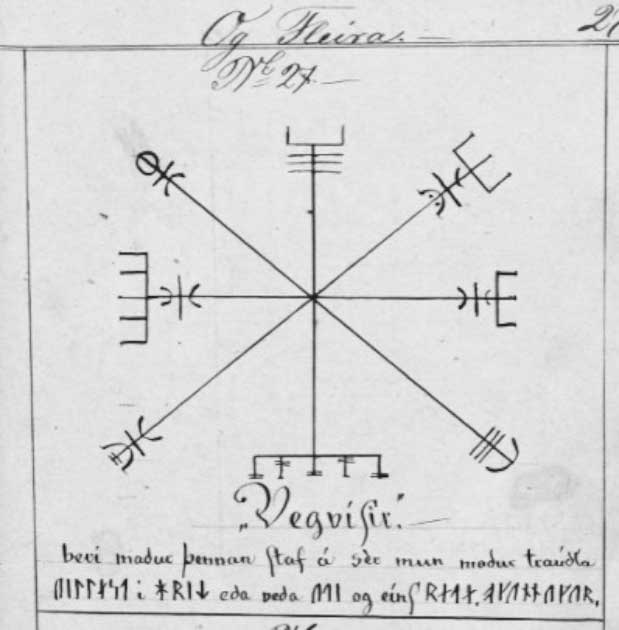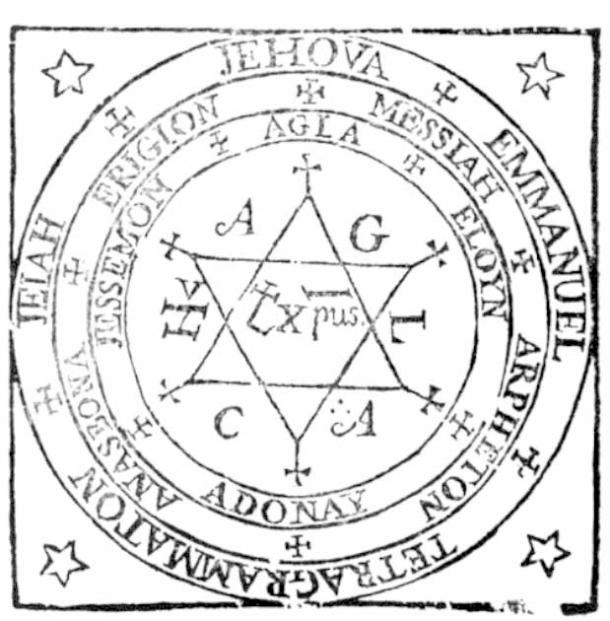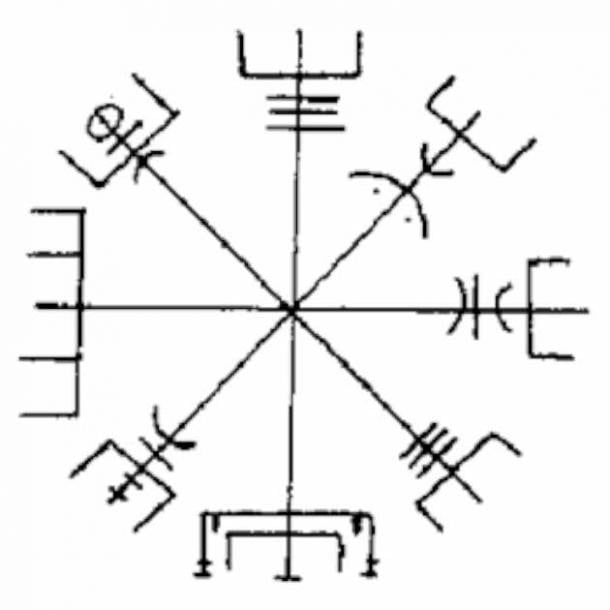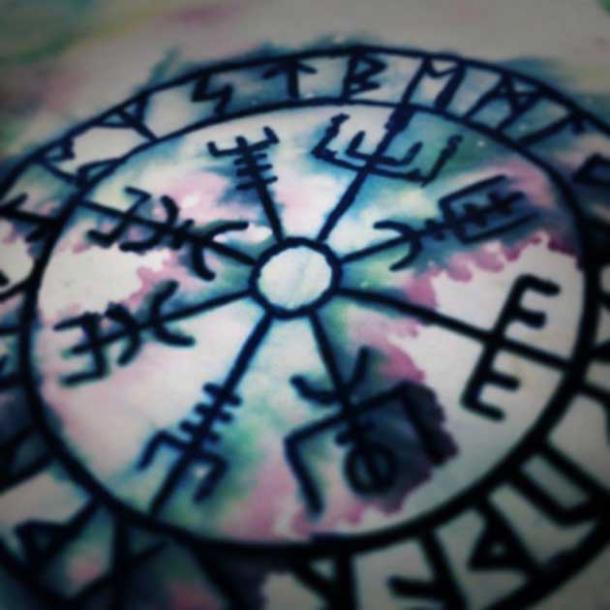You may not recognize the name Vegvisir, but you might just recognize the symbol when you see it. It is an iconic emblem largely due to its use by neo-pagans, musicians, and re-enactors. Vegvisir is also commonly depicted on Viking-era TV shows, as well as jewelry and tattoos. Vegvisir has become generally accepted today as an ancient Germanic and Viking runic symbol that functioned as a compass for traveling Viking warriors during sea voyages, providing guidance and protection from the gods. The origin of this symbol, however, is a little different.
Vegvisir in Icelandic Grimoires
This modern interpretation of Vegvisir can only be found in popular literature and romantic fiction created in the past thirty years. To understand the symbol’s true meaning, you have to look back a little further to three Icelandic grimoires written in the 19th century. Grimoires are textbooks on magic spells, rituals, and tools, as well as how to make and use them. The first and most important of these is the Huld manuscript . It was composed by Geir Vigfússon in Akureyri, Iceland in 1860. It consists of twenty-seven paper lists and contains thirty supposedly magical symbols. Vegvisir is depicted on page 60, alongside another unspecified symbol and the following note

The 1860 Huld manuscript is the earliest mention of the Vegvisir in Icelandic literature (Jara Lisa / CC BY-SA 4.0 )
The second grimoire is known as the Book of Spells, or Galdrakver in Icelandic. It was written by Olgeir Geirsson in Akureyri in 1868-1869. This manuscript is fifty-eight pages long and Vegvisir is depicted on page 27 and designated as symbol 27. It includes a note, written partially in Latin and partially in runes

The last of the three grimoires has the same name as the second: Book of Spells . The author, date, and location of this grimoire’s origin are unknown. We do know that it was written sometime in the 19th century in the Eyjafjord, close to Akureyri. The manuscript is thirty-two pages long, and features many of the same symbols that are found in the previous two grimoires, including “Solomon’s Sigil” and “Mark against a Thief”. Interestingly, the text accompanying the Vegvisir symbol this time is overtly Christian in nature. It is somewhat awkward to translate, and no attempt is perfect; however, it has been done:
“To avoid getting lost: keep this sign under your left arm, its name is Vegvísir and it will serve you if you believe in it – if you believe in God in the name of Jesus – the meaning of this sign is hidden in these words, so you may not perish. May God give me luck and blessing in the name of Jesus.”
The True Origins of Vegvisir
Although these are the only known sources of Vegvisir from Iceland, the symbol can actually be found in an earlier source. Vegvisir, along with many of the other symbols in the grimoires, most likely came to Iceland from England. Many star-shaped symbols can be traced to England as far back as the 15th century from books such as the Testament of Solomon . All of these symbols originated in Christian mysticism rather than Norse paganism. The understanding of the Vegvisir symbol gradually changed over time, particularly in the 20th century, thanks to several Icelandic works.

The Grand Pentacle of Solomon, from a 1547 French edition of the grimoire Heptameron. The symbol is said to be a precursor to the Vegvisir ( Public Domain )
The first of these works was an article by Ólaf Davíðsson in 1903 on Icelandic magical marks and books. Then, in 1940, the Vegvisir symbol appeared again in a book by Jochum Eggertsson on the same topic, named The Sorcerer’s Screed: The Icelandic Book of Magic Spells . Finally, at the end of the 1980s, a paper by the author Stephen Flowers called The Galdrabók : An Icelandic Grimoire mentioned the Vegvisir too, but only as a side note on Icelandic grimoires. However, it was this paper that is likely the main reason for the popularity of the Vegvisir symbol today.

Vegvisir from The Galdrabók by Steven Flowers (Jara Lisa / CC BY SA 4.0 )
How Vegvisir became a ‘Viking’ symbol
Flowers’ paper was intensely promoted during the early years of the internet during a time when there was a growing interest in Norse culture, and the reenactment community was emerging. People researching the topic inevitably found the paper, since it was one of the few resources on the topic available online. Once it rose in popularity, online shops targeting this particular market also began using the symbol on their products. Even Icelandic tourist shops began using the Vegvisir symbol, promoting it as an authentic Viking symbol .
In 1982, the Icelandic singer Björk had the symbol tattooed on her arm. She described it as “an ancient Viking symbol, which seafarers painted with coal on their foreheads to find the correct way”. This resulted in the symbol becoming a popular tattoo, and a common sight in tattoo artists’ portfolios. By that time, the Vegvisir symbol was mainstream.

Icelandic singer Björk, performing at Coachella in 2007. Her arm tattoo of Vegvisir in 1982 helped boost its popularity as a supposed Viking symbol. (thetripwirenyc / CC BY 2.0 )
Ultimately, Vegvisir cannot reasonably be considered a Viking symbol, given that its earliest appearance in Nordic sources is some 800 years after the end of the Viking Age. Even the Vegvisir symbols found in the 19th-century Icelandic grimoires are not identical to the symbol we know today. The original symbol was square in shape. It was not until the 20th-century texts from Davíðsson, Eggertson, and Flowers were published that the symbol evolved into the circular one we know today.

Modern tattoos of Vegvisir are generally a circular design (Eddie Black / CC BY 2.0 )